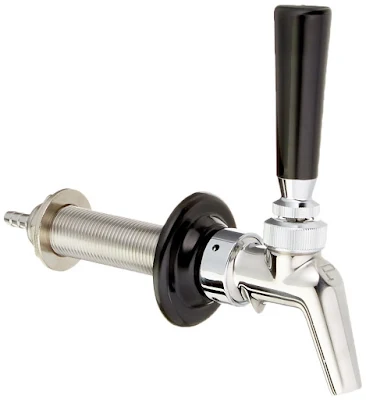There are many facets of beer making that are important:
The right hops.
The right temperature at which to brew.
The right yeast.
The right sized kettle.
The right whatever else you think is important.
But as any cook, painter, website designer or astronaut will tell you, preparation is the key to success and the father of successful brewing is making sure that your beer making equipment is clean!
Now, mixing chemicals found in the kitchen or laundry can be dangerous but we are not using chlorine or ammonia here so we are on safe ground to mix our formula's ingredients.
The ratio to prepare is 70% Oxiclean with 30% TSP/90 - by weight. This ratio gives you your DIY version of PBW.
The right hops.
The right temperature at which to brew.
The right yeast.
The right sized kettle.
The right whatever else you think is important.
But as any cook, painter, website designer or astronaut will tell you, preparation is the key to success and the father of successful brewing is making sure that your beer making equipment is clean!
We've previously recommended PBW as a literal solution to cleaning your brewing equipment as it is a proven cleaner and degreaser.
But as a branded home brewer product, Powdered Brewery Wash can cost you some real cash money. Many brewers swear by and believe in its value but if you are looking to get a substitute product at a cheaper price, there's a handy wee trick you may wish to try to make your own version of PBW.
can cost you some real cash money. Many brewers swear by and believe in its value but if you are looking to get a substitute product at a cheaper price, there's a handy wee trick you may wish to try to make your own version of PBW.
What you are going to do is replicate the two main ingredients of PBW to make your own recipe.
We are looking to source these two active ingredients found in PBW.
The good news is that you might already have the percarbonate on a shelf in your laundry at home!
Many washing machine soaker's main ingredient is based the chemical we are after, sodium percarbonate.
Examples of the brands we are talking about are the household names such as Tide, Oxiclean, or Napisan.
For the metasilicate, we've found that many home DIY brewers use a cleaner called Red Devil TSP/90. You can find it on Amazon or local stores such as Walmart, Lowes or Home Depot. Sparklebright is also well known for containing TSP.
The TSP stands for tri-sodium phosphate. That chemical is not actually used much in America due to environmental concerns so the TSP/90 is actually a substitute product, hence the meta-silicate!
Confusing much?
But as a branded home brewer product, Powdered Brewery Wash
What you are going to do is replicate the two main ingredients of PBW to make your own recipe.
We are looking to source these two active ingredients found in PBW.
- Sodium percarbonate
- Sodium metasilicate
So where does one find these ingredients in home products?
The good news is that you might already have the percarbonate on a shelf in your laundry at home!
Many washing machine soaker's main ingredient is based the chemical we are after, sodium percarbonate.
Examples of the brands we are talking about are the household names such as Tide, Oxiclean, or Napisan.
For the metasilicate, we've found that many home DIY brewers use a cleaner called Red Devil TSP/90. You can find it on Amazon or local stores such as Walmart, Lowes or Home Depot. Sparklebright is also well known for containing TSP.
The TSP stands for tri-sodium phosphate. That chemical is not actually used much in America due to environmental concerns so the TSP/90 is actually a substitute product, hence the meta-silicate!
Confusing much?
So how to prepare this combo?
Now, mixing chemicals found in the kitchen or laundry can be dangerous but we are not using chlorine or ammonia here so we are on safe ground to mix our formula's ingredients.
The ratio to prepare is 70% Oxiclean with 30% TSP/90 - by weight. This ratio gives you your DIY version of PBW.
How much powder to use?
The concentration is 1 ounce per gallon of water which equates to 30 grams per 3.5 litres which is basically about 10 grams per litre.
While Red Devil TSP/90 contains no phosphorous, lye or other abrasives and the laundry soaker is pretty benign, it is prudent to use protective gloves during use. This is because the chemicals are alkaline and contact with your skin is not recommended.
You can then use your cleaner in the usual manner to soak and scrub your fermenter and other brewing equipment.
Safety precautions
While Red Devil TSP/90 contains no phosphorous, lye or other abrasives and the laundry soaker is pretty benign, it is prudent to use protective gloves during use. This is because the chemicals are alkaline and contact with your skin is not recommended.
You can then use your cleaner in the usual manner to soak and scrub your fermenter and other brewing equipment.





